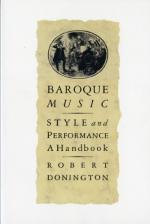|
This section contains 313 words (approx. 2 pages at 300 words per page) |

|
John Essex, trans., The Dancing Master (1728)—This translation of Pierre Rameau's dance treatise provided performers in England with knowledge of the latest trends in French dance. Rameau was one of the most important theorists of dance in eighteenth-century France. He explained the precise placement of hands and feet besides cataloguing an enormous number of steps.
Jean-Georges Noverre, Letters on Dancing and Ballets (1754)—One of the most influential dancing treatises of all time, this collection of observations on dance reinterpreted the art form according to the theories of the Enlightenment. Noverre stressed that dance must strive to be a representation of the human emotions, that it should adapt a greater naturalism, and that it should abandon the cumbersome costumes and masks typical of the day. Noverre's theories, which attacked the mere technical virtuosity of many contemporary dancers, were controversial, but eventually prevailed in...
|
This section contains 313 words (approx. 2 pages at 300 words per page) |

|



